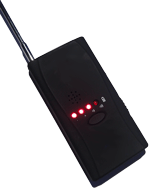|
Knowing how motorcycles are stolen goes a long way into being
able to protect against their theft.
To understand how bikes are stolen, you need to understand
there are three types of motorcycle thief;
1) the professional thief- steals to order. Organised and
efficient, target the specific bike, with the intention of
whisking it away in preparation for stripping down, cloning
or export. This group of thieves may have many machines in
different stages of preparation. With the increase in trackers
and data marking they will not want to be caught with a "hot
bike", so will park it somewhere quiet, "pinch and
park". It has been known for this type of thief to strip
down immediately, whilst still in the van.
2) the determined thief - steals to a "shopping list"
of types/makes. Willing to cut, smash, break to remove the
bike away from the scene, again parking it somewhere quiet
often within a couple of miles, until the heat is off.
3) the opportunist thief - doesn't really know what they
want, but will steal if the opportunity arises. Normally looks
for the easiest target with least security.
Whilst many bikes are stolen from the street outside during
work hours, the vast majority are stolen from the owners home.
Keeping a bike out of sight is important, having it visible
from the road under a cover or because you leave the garage
door open is an invitation for a thief to return at a later
date.
Be aware of vehicles following you home. Also be aware that
thieves love garages. Once into a garage they can pull down
the door and grind away quite happily at your ground anchor
chain, whilst the neighbours only hearing a distant noise
of someone doing DIY.
What you need to know about what thieves do
1) Manufacturers steering locks - with enough force to the
handlebars and front wheel they are broken easily.
2) Ignition - Ignition barrels can be removed with a self
tapping screw and a claw hammer.
3) Disk Locks/Chains - can be ground off with a battery operated
grinder
So knowing this, why bother fitting anything? The assumption
that every thief will be tooled up for every security device
is wrong. Some thieves will be very well prepared, others
less so. Mechanical locks are still a huge deterrent to motorcycle
theft, the more security devices you fit, the more trouble
it will cause the thief, the more likely they are to find
something easier.
How to secure your motorbike
1) always engage the steering lock, deters the opportunist.
2) fit an immobilizer with visual indication (LED), again
it will deter the opportunist especially as it indicates that
removing the ignition barrel won't allow them to start the
bike with a screw driver.
3) use a disk lock, the more visible security devices you
have the more thieves will look elsewhere.
4) anchor to a solid object, but don't let the chain rest
on the ground as this makes it easier to grind/cut. This will
encourage many thieves to look elsewhere.
5) security mark the components on your bike and use the
sticker provided. Thieves are put off by bikes having security
marking, it means if a single microdot is found on a part
in their possession, they have some explaining to do, and
ties them to a stolen bike.
6) use an alarm. Audible alarms have a use, but ask yourself,
last time you heard an alarm going off ... what did you do
about it? Think more about silent alarms, ones that notify
your mobile phone that your bike or the locks are being attacked.
7) use a tracker that transmits as little as possible, thereby
being invisible to radio frequency detection devices. Thieves
are wary of them, their usual response is to "pinch and
park". If after a week the bike is where they left it,
then it is safe to take it to their lair. Contrary to popular
belief trackers do not have to be expensive.
 |
|
Our
Trackers are specifically configured not to be found
by using detectors
|
|
.gif)